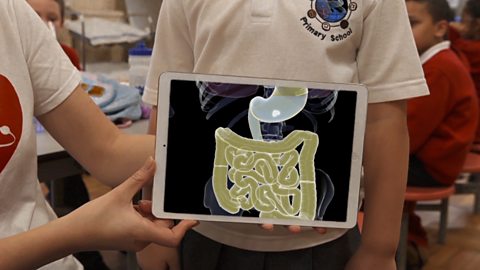PRESENTER:'It's lunchtime and all the children are playing outside. Jamie is really going for it, running around using up lots of energy.'
PRESENTER:Let's take a closer look.
PRESENTER:You can see that his heart is pumping hard. His lungs are working hard to supply his body with oxygen, and his heart is beating quickly to send the oxygen around his body, in his blood to where it's needed in his muscles and organs.
PRESENTER:The amount of air we can fit inside our lungs is called our lung capacity.
PRESENTER:We're going to find out our lung capacity. What we’re going to do is blow air into this tube, as much air as you can blow out of your lungs. And when we blow, it's going to push out some water from this plastic bottle. And if we measure how much water has been pushed out, we can find out how much air fitted inside your lungs.
PRESENTER:So Kian, are you ready? You're going to go first, so pick up the tube, and take a nice deep breath, and blow!
PRESENTER:Keep going!
PRESENTER:Fabulous, let's look at the number.
BOTH:1,500.
PRESENTER:1,500 centimetres cubed! Brilliant, shall we go and write it down?
PRESENTER:Take a deep breath, and blow!
PRESENTER:Go!
PRESENTER:'If you have a large lung capacity, then oxygen can travel around your body faster.'
PRESENTER:How does air get from our lungs, into our blood?
PRESENTER:'Air travels down our trachea and into our lungs, into tiny sacks called alveoli. From here, oxygen is absorbed into our blood, and pumped around our body.'
PRESENTER:We can increase our lung capacity, by exercising regularly, but there are things that can decrease our lung capacity, and the main one is smoking. Smoking isn't good for any part of our body, but especially our lungs.
PRESENTER:The air we breathe is made up of different gasses like nitrogen, and oxygen. It's also full of tiny particles. If we were able to blow them up hundreds and thousands of times their normal size, they might look a little bit like this.
PRESENTER:These particles are made up of dust and smoke, and spores and pollen from plants and fungi. They're so light, they're carried along by the wind, and we can breathe them in, as they float past.
PRESENTER:'Ella's about to sneeze, let's see what's going on inside her nose. Our first line of defence is nasal hair. These wiry little hairs are great at trapping larger particles. The second line of defence is mucus, or snot, as it's affectionately known. If particles make it past our nasal hair and mucus, they can cause a reflex reaction.
PRESENTER:Our body takes a sudden deep breath in, the breath is held for a moment,
PRESENTER:then expelled through our mouth and nose, in a noisy blast of air… and mucus.
Video summary
Zoe explains how oxygen is transported around the body in our blood.
Graphics show how when we exercise, our lungs work harder to take in oxygen and our heart has to work harder to pump it around the body.
Zoe and the children do a lung capacity experiment, and discuss the dangers of smoking.
CGI animation explains the makeup of the air that we breath and how nasal hairs and snot filter out impurities such as airborne dust and pollen.
This short film is from the BBC series, Biological processes of the human body.
Teacher Notes
You could create a lung capacity experiment using the filmed demonstration as a template.
Measure the different lung capacity of the children in your class and create a graph to represent this and work out the average lung capacity of your pupils.
A graph could be created based upon the number of children in the classroom that have allergies to pollen or other airborne causes.
Collect data about the locality of the school regarding pollution and other factors, and discuss how pollution affects our breathing and health.
Talk to the local environmental officer about this; you could invite them to visit your school to make a presentation.
This short film will be relevant for teaching the topic of the human body at KS2 in England, Wales and Northern Ireland and Second Level in Scotland.
Digestion - how does breakfast affect your day? video
The impact of having a healthy breakfast is explored, and a rather disgusting experiment highlights how the body gets nutrients out of food.
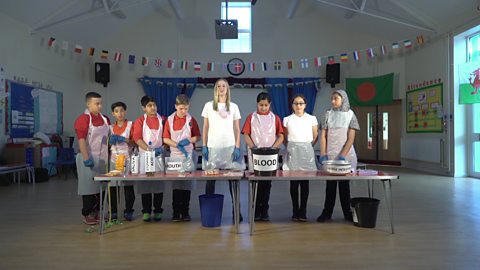
How do muscles and bones work? video
A model skeleton, elastic bands and rubber gloves are used to demonstrate how our muscles and bones allow our bodies to move.
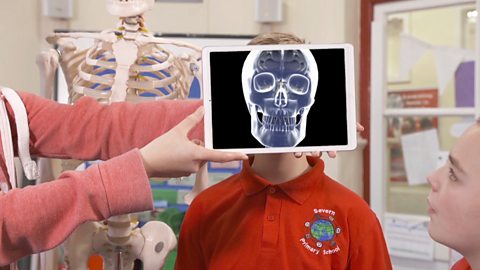
Teeth - how they help animals eat. video
How different types of animals use their teeth to help them eat their food.

How our circulatory system keeps us alive. video
Zoe uses CGI graphics to explain the structure of the heart and the difference between veins and arteries.
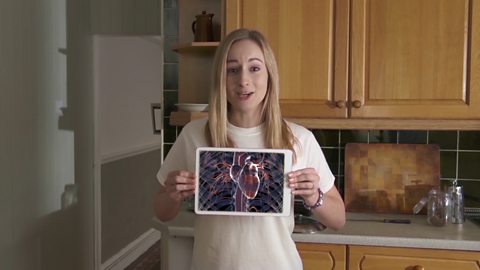
How the human body grows. video
Zoe talks us through the process of human life, using graphics to show how we grow inside the womb.
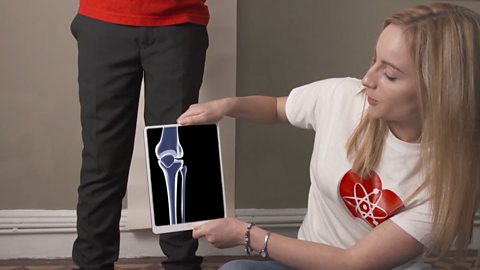
What causes us to burp and break wind? video
A light-hearted look at the biological processes that make us burp and fart.
